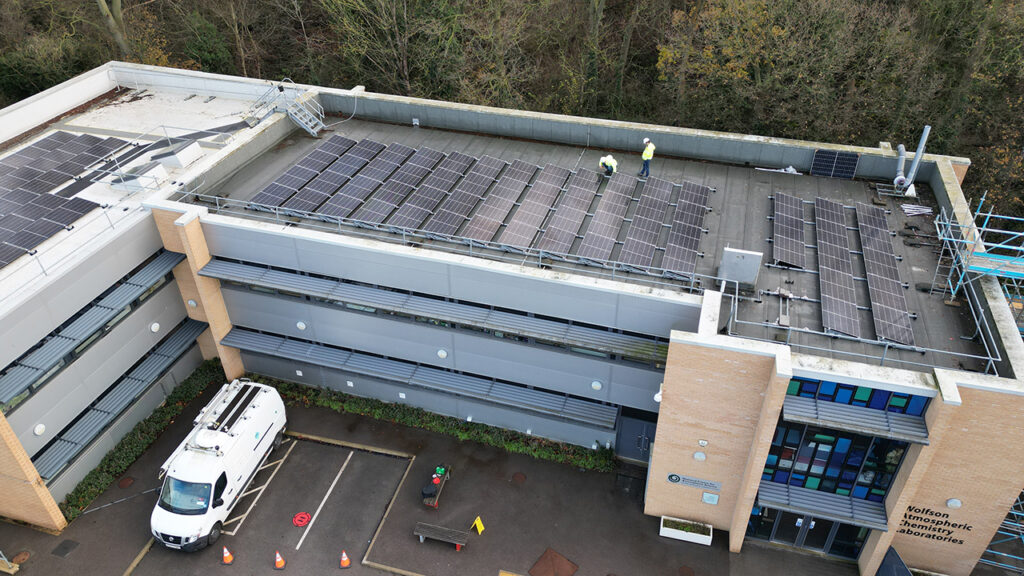
Solar energy to power air pollution research
A solar energy system has been installed to power atmospheric chemistry laboratories at the National Centre for Atmospheric Science (NCAS) and University of York.
The new system covers 500m2 of roof space, and is expected to generate around 35,000 kWh of electricity annually.
The atmospheric chemistry laboratories in York support NCAS researchers to identify air pollutants and better understand the emissions and reactions of chemicals in the air we breathe.
Recognising that scientific activities have environmental impacts, the air quality research site in York is now using solar energy to reduce greenhouse gas emissions by 7245kg CO2e and provide 12% of the building’s total yearly power usage.
Cutting-edge research into air pollution requires energy to power the latest instrumentation and computer models, and if this energy is generated using fossil fuel consumption then this in itself causes emissions of pollutants. Therefore we are constantly taking steps to improve our own efficiency to reduce power consumption and, as in this case, to generate our own emission-free electricity.
Professor James Lee, NCAS atmospheric chemist based at the University of York
Investing in renewable energy, as well as adopting a range of other sustainable practices, is a quick way to reduce carbon emissions from this research facility’s operations.
NCAS’ Operations Director, John Eager, says:
“NCAS is fully aligned with UK Research and Innovations’ 2040 net zero ambition and are working with all our university partners to achieve this. The challenge is one we must all take on together and I am thankful to the NCAS team and the University of York for supporting and enabling this work to provide sustainable energy for our world class science.”
Image credit: Solar panels on the roof on the Wolfson Atmospheric Chemistry Laboratories building. The image was taken by drone operator Daniel Marfiewicz-Dickinson, from the Institute for Safe Autonomy at the University of York.
